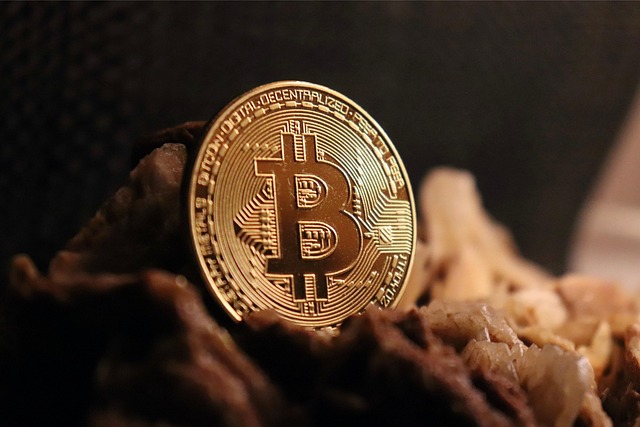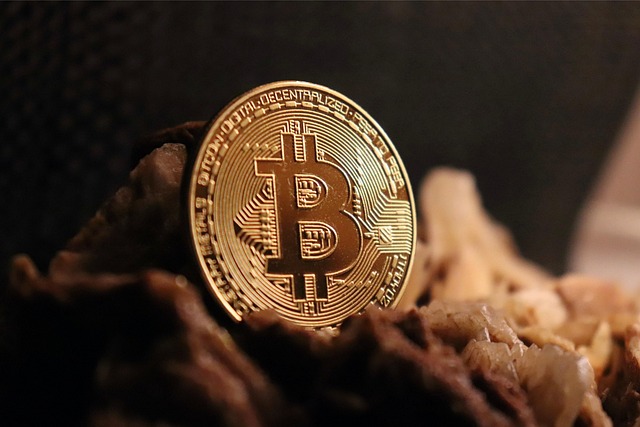Canary Capital files for staked TRX ETF
United States asset manager Canary Capital has filed to list an exchange-traded fund (ETF) holding the Tron blockchain network’s native token, TRX (TRX), regulatory filings show. The fund intends to hold spot TRX and stake a portion of the tokens for added yield, the filing said. According to CoinMarketCap, the TRX token has a total market capitalization of more than $22 billion. Staking TRX generates an annualized yield of approximately 4.5%, data from Stakingrewards.com shows.The filing is the latest in an outpouring of submissions aimed at listing ETFs holding alternative cryptocurrencies, or “altcoins.” However, Canary’s proposed fund is relatively unique in requesting permission to stake its crypto holdings in its initial application. Other US ETFs, such as those holding the Ethereum network’s native token, Ether (ETH), have sought approval for staking only after successfully listing a fund holding the spot token. They are still waiting for a regulatory decision. Tron is a proof-of-stake blockchain network founded by Justin Sun, who also owns Rainberry (formerly Bittorrent), the developer of the BitTorrent protocol. In March 2023, the SEC sued Sun for allegedly fraudulently inflating the prices of the Tron token and BitTorrent’s BTT token. In February, the SEC and Sun asked the judge overseeing the lawsuit to pause the case to allow the parties to enter into settlement talks. Platforms for staking TRX. Source: Stakingrewards.comRelated: Canary Capital proposes first Sui ETF in US SEC filingAltcoin ETF seasonSince US President Donald Trump took office in January, US regulators have acknowledged dozens of filings for proposed crypto investment products. They include plans for ETFs holding native layer-1 tokens such as Solana (SOL) as well as memecoins such as Official Trump (TRUMP). Since 2024, Canary has filed for several proposed US crypto ETFs, including funds holding Litecoin (LTC), XRP (XRP), Hedera (HBAR), Axelar (AXL), Pengu (PENGU), and Sui (SUI).Some industry analysts doubt that ETFs holding non-core cryptocurrencies will be embraced by traditional investors.“Most crypto ETFs will fail to attract AUM and cost issuers money,” crypto researcher Alex Krüger said in a March post on the X platform.Magazine: SEC’s U-turn on crypto leaves key questions unanswered
US prosecutors to pursue ex-SafeMoon CEO case despite DOJ memo
Federal prosecutors said they will continue pursuing their case against Braden John Karony, the former CEO of crypto firm SafeMoon, despite the US Justice Department issuing a memo suggesting a policy of abandoning “regulation by prosecution” related to digital assets.In an April 18 filing in the US District Court for the Eastern District of New York, US Attorney for EDNY John Durham said his office had reviewed the April 7 DOJ memo issued by Deputy Attorney General Todd Blanche and intended to proceed with a trial against Karony. The former SafeMoon CEO faces securities fraud conspiracy, wire fraud conspiracy, and money laundering conspiracy charges for allegedly “divert[ing] and misappropriat[ing] millions of dollars’ worth” of the platform’s SFM token between 2021 and 2022.April 18 notice that US prosecutors will continue to prosecute John Karony. Source: PACERKarony, initially indicted in October 2023 under former US Attorney for EDNY Breon Peace, argued in February that his criminal trial should be delayed, hinting that securities laws enforcement under the Donald Trump presidency could see “significant changes.” The judge denied the motion and later ordered jury selection for the trial to begin on May 5. However, Karony’s legal team made its claims about securities laws under Trump potentially undergoing “policy changes” before the Securities and Exchange Commission (SEC) dismissed cases and dropped investigations into many crypto firms facing allegations of violating securities laws. Blanche’s April 7 memo also suggested that the DOJ under Trump would direct jurisdictions not to pursue many crypto enforcement cases.Related: Democrats slam DOJ’s ‘grave mistake’ in disbanding crypto crime unit“[T]he parties may learn within days or hours of the commencement of trial that DOJ no longer considers digital assets like SafeMoon to be ‘securities’ under the securities laws,” said Karony’s legal team on Feb. 5. “Worse, the parties may learn this during or shortly after a trial, half of whose charges rest on the government’s claim that SafeMoon is such a security.”Crypto enforcement by the SEC and DOJ under TrumpSince being appointed acting SEC chair by Trump in January, Mark Uyeda has led the agency to drop cases against Ripple Labs, Coinbase, Kraken, and others. The SEC has also launched a crypto task force headed by Commissioner Hester Peirce to explore a regulatory framework for digital assets, and issued a memo saying memecoins were not securities. The agency’s actions suggest a more permissive approach to digital assets than that under former chair Gary Gensler.“By directing the SEC to abdicate its critical mission of investor protection, Mr. Trump is unnecessarily endangering our financial system,” said former SEC official John Reed Stark in an April 18 New York Times op-ed with Duke University lecturing fellow Lee Reiners. “Whether he is doing so to keep his promise to crypto-donors or in a zeal to cash in (or perhaps even both), that is a troubling development not just for investors and banks, but for all of us.”Whether Trump’s appointees in the Justice Department intend to step in and move to halt Karony’s case, as the DOJ did in the corruption case with New York City Mayor Eric Adams, is unclear. At the time of publication, the former SafeMoon CEO was set to go to trial in May and has been free on a $3 million bond since February 2024. He has pleaded not guilty to all charges.Magazine: SEC’s U-turn on crypto leaves key questions unanswered
Bitcoin whales absorb 300% of newly mined BTC supply — Is $100K next?
Bitcoin’s (BTC) richest traders and investors are increasingly bullish on BTC despite facing downside risks from unfavorable macroeconomic factors, the latest onchain data suggests. Bitcoin whales absorbing 300% of new supplyBitcoin whales and sharks are now absorbing BTC at record rates—over 300% of yearly issuance—while exchanges are losing coins at a historic pace, according to Glassnode.Notably, Bitcoin’s yearly absorption rate by exchanges has plunged below -200% as outflows continue. This signals a growing preference for self-custody or long-term investment.Bitcoin yearly absorption rates. Source: GlassnodeMeanwhile, larger holders (100–1,000+ BTC) are scooping up more than three times the new issuance, marking the fastest rate of accumulation among sharks and whales in Bitcoin’s history. Bitcoin yearly absorption rates of whales and sharks. Source: GlassnodeThis marks a structural shift as traditional finance increasingly adopts BTC, particularly with the approval spot Bitcoin ETFs last year. The result is less BTC supply on crypto exchanges and long-term bullish conviction among big holders.Most cohorts are buying the BTC price dipBitcoin whales holding over 10,000 BTC remain in strong accumulation territory, with their Trend Accumulation Score at around 0.7 as of April 18, according to Glassnode.Bitcoin trend accumulation score by cohort. Source: GlassnodeThis metric quantifies cohort behavior from distribution (0) to accumulation (1). The score implies confidence among the largest holders of Bitcoin.In contrast, the sell-off in smaller cohorts that have been distributing earlier in the year appears to be slowing down. That includes the 10–100 BTC and the 1-100 BTC groups, whose scores have climbed back to a neutral zone at around 0.5.Even the smallest cohort (<1 BTC), largely composed of retail participants, is no longer in deep distribution mode, indicating a broader pivot back toward accumulation among most Bitcoin groups.Onchain analyst Mignolet adds that the whale behavior is similar to what preceded Bitcoin’s 2020 bull run.Bitcoin falling wedge breakout hints at $100KBitcoin has broken out of a multimonth falling wedge pattern, signaling a potential bullish reversal that could drive its price toward the $100,000 mark by May.A falling wedge forms when price action contracts between two downward-sloping trendlines and resolves with an upside breakout. Traders typically measure the wedge’s upside target by measuring its maximum height and adding the outcome to the breakout point. BTC/USD daily price chart. Source: TradingViewApplying this rule of technical analysis brings Bitcoin’s target to over $101,570.Related: 4 reasons why Bitcoin price could rally to $90K in AprilConversely, BTC’s price is testing its 50-day (the red wave) and 200-day (the blue wave) exponential moving averages (EMAs) around $85,300 as resistance. A bearish rejection from these EMAs risks pushing BTC’s price toward the wedge’s upper trendline near $80,000. “The 200-day moving average remains overhead as resistance, and the horizontal level at $88,804 is still the key barrier to flip market structure and print a higher high,” wrote market analyst Scott Melker, adding: “Encouraging – but not convincing – yet. Bulls need to follow through with strength.”This article does not contain investment advice or recommendations. Every investment and trading move involves risk, and readers should conduct their own research when making a decision.
KiloEX exchange exploiter returns $5.5M days after $7.5M hack
The hacker behind the $7.5 million KiloEx exploit returned $5.5 million worth of cryptocurrency just four days after the attack occurred.Decentralized exchange (DEX) KiloEx suspended platform operations after suffering a $7.5 million exploit, Cointelegraph reported on April 15.In a surprising turn of events, the wallet address behind the exploit has returned $5.5 million worth of cryptocurrency to the DEX. KiloEX exploiter returns $5.5m. Source: PeckShieldAlert“#KiloEx exploiter -labeled addresses have returned ~$5.5M worth of cryptos to #KiloEx,” according to an April 18 X post from blockchain security platform PeckShieldAlert.Related: Mantra OM token crash exposes ‘critical’ liquidity issues in cryptoThe unexpected repayment occurred after KiloEx offered a $750,000 “white hat” bounty to the hacker — 10% of the stolen amount — if the hacker returned 90% of the looted assets.The platform said it was working with law enforcement and cybersecurity firms, including Seal-911, SlowMist and Sherlock, to uncover more about the hacker’s activity and identity.The initial attack may have been caused due to a “price oracle issue,” where the information used by a smart contract to determine the price of an asset is manipulated or inaccurate, leading to the exploit, PeckShield said in an April 14 X post.Related: Top 100 DeFi Hacks: Offchain attack vectors account for 57% of lossesThis is a developing story, and further information will be added as it becomes available.
Altcoins may rally in Q2 2025 thanks to improved regulations: Sygnum
Altcoins may see a resurgence in the second quarter of 2025 as regulations for digital assets continue to improve, according to Swiss bank Sygnum.In its Q2 2025 investment outlook, Sygnum said the space has seen “drastically improved” regulations for crypto use cases, creating the foundations for a strong alt-sector rally for the second quarter. However, it added that “none of the positive developments have been priced in.” In April, Bitcoin dominance reached a four-year high, signaling that crypto investors are rotating their funds into an asset perceived to be relatively safer. Still, Sygnum said regulatory developments in the US, such as President Donald Trump’s establishment of a Digital Asset Stockpile and advancing stablecoin regulations, may propel broader crypto adoption.“We expect protocols successful in gaining user traction to outperform and Bitcoin’s dominance to decline,” Sygnum wrote. Increased focus on economic value ignites competitionSygnum also said that competition would increase as the market focuses on economic value. Increased competition in a market often results in better products, ultimately benefiting consumers: “The market’s increased focus on economic value compels greater competition for user growth and revenues, with rising protocols such as Toncoin, Sui, Aptos, Sonic, or Berachain taking different approaches.”Sygnum added that while high-performance blockchains address limitations of the Bitcoin, Ethereum and Solana blockchains, they find it challenging to achieve meaningful adoption and fee income. Sector breakdown by market capitalization. Source: SygnumThe report highlighted that some approaches have been more sustainable. These include Berachain’s approach of incentivizing validators to provide liquidity to decentralized finance (DeFi) applications, Sonic’s rewarding developers that attract and retain users, and Toncoin’s Telegram affiliation to access 1 billion users.Aside from layer-1 chains, Sygnum highlighted that layer-2 networks like Base also have potential. The report pointed out that while the memecoin frenzy on the blockchain pushed its users and revenue to new highs, it made an equally sharp decline after memecoins started losing steam. Despite this, Sygnum noted that Base remains the layer-2 leader in metrics like daily transactions, throughput and total value locked. Related: Italy finance minister warns US stablecoins pose bigger threat than tariffsMemecoins still a leading crypto narrative in Q1Despite recent price declines, memecoins remained a dominant crypto narrative in Q1 2025. A CoinGecko report recently highlighted that memecoins remained dominant as a crypto narrative in the first quarter of 2025. The crypto data company said memecoins had 27.1% of global investor interest, second only to artificial intelligence tokens, which had 35.7%.While retail investors are still busy with memecoins, institutions have a different approach. Asset manager Bitwise reported on April 14 that publicly traded firms are stacking Bitcoin. At least 12 public companies purchased Bitcoin for the first time in Q1 2025, pushing public firm holdings to $57 billion.Magazine: Uni students crypto ‘grooming’ scandal, 67K scammed by fake women: Asia Express
Bitcoin dip buyers nibble at BTC range lows but are risk off until $90K becomes support
Bitcoin’s (BTC) realized market cap reached a new all-time high of $872 billion, but data from Glassnode reflects investors’ lack of enthusiasm at BTC’s current price levels. In a recent X post, the analytics platform pointed out that despite the realized cap milestone, the monthly growth rate of the metric has dropped to 0.9% month over month, which implied a risk-off sentiment in the market. Bitcoin realized cap net position. Source: X.comRealized cap measures the total value of all Bitcoin at the price they last moved, reflecting the actual capital invested, providing insight into Bitcoin’s economic activity. A slowing growth rate highlights a positive but reduced capital inflow, suggesting fewer new investors or less activity from current holders.Additionally, Glassnode’s realized profit and loss chart recently exhibited a sharp decline of 40%, which signals high profit-taking or loss realization. The data platform explained,“This suggests saturation in investor activity and often precedes a consolidation phase as the market searches for a new equilibrium.”While new investors remained sidelined, existing investors are probably adopting a cautious approach due to the short-term holder’s realized price. Data from CryptoQuant suggested that the current short-term realized price is $91,600. With BTC currently consolidating under the threshold, it implies short-term holders are underwater, which can increase selling pressure if they sell to cut their losses.Bitcoin short-term holders’ price and MVRV. Source: CryptoQuantSimilarly, Bitcoin’s short-term holder market value to realized value remained below 1, a level historically associated with buying opportunities and further proof that short-term holders are at a loss.Related: Bitcoin US vs. offshore exchange ratio flashes bullish signal, hinting at BTC price highs in 2025Bitcoin chops between US and Korean tradersData shows a sentiment divergence between Bitcoin traders in the US and Korea. The Coinbase premium, reflecting US trading, recently spiked, signaling strong US demand and potential Bitcoin price gains. Conversely, the Kimchi premium index fell during the correction, indicating lagging retail engagement among Korea-based traders.This particular uneven demand is reflected in Bitcoin’s recent price action. The chart shows that Bitcoin’s price has oscillated between a tight range of $85,440-$82,750 since April 11. On the 4-hour chart, BTC has retained support from the 50-day, 100-day, and 200-day moving averages, but on the 1-day chart, these indicators are putting resistance on the bullish structure.Bitcoin 4-hour chart. Source: Cointelegraph/TradingViewRelated: Bitcoin online chatter flips bullish as price chops at $85K: SantimentThis article does not contain investment advice or recommendations. Every investment and trading move involves risk, and readers should conduct their own research when making a decision.
Russia finance ministry official floats country making own stablecoins: Report
A Russian finance ministry official has reportedly said the country should be developing its own stablecoin after a recent freeze on wallets linked to the sanctioned Russian exchange Garantex by US authorities and stablecoin issuer Tether. Deputy director of Russia’s Finance Ministry’s financial policy department, Osman Kabaloev, said the Kremlin should be exploring the possibility of developing a stablecoin like Tether’s (USDT) to avoid similar actions in the future, according to April 16 reports by Reuters and the state-owned news agency TASS.“We do not impose restrictions on the use of stablecoins within the experimental legal regime. Recent developments have shown that this instrument can pose risks for us,” Kabaloev told TASS.“This leads us to consider the need to develop internal instruments akin to USDT, potentially pegged to other currencies.”On March 6, the US Department of Justice collaborated with authorities in Germany and Finland to freeze domains associated with Garantex, which authorities claimed processed over $96 billion worth of criminal proceeds since launching in 2019.Stablecoin operator Tether also froze $27 million worth of its stablecoin on March 6, forcing Garantex to halt all operations, including withdrawals.The US Treasury’s Office of Foreign Assets Control first hit Garantex with sanctions in April 2022 over alleged money laundering violations.Russian crypto exchange Garantex had to halt withdrawals after Tether Froze $27 million of its USDT. Source: US Department of JusticeGarantex has allegedly resurfaced under a new name after reportedly laundering millions in ruble-backed stablecoins and transferring them to a newly established exchange, a Swiss blockchain analytics firm has claimed.Russia already making crypto moves Meanwhile, Evgeny Masharov, a member of the Russian Civic Chamber, proposed on March 20 to create a Russian government crypto fund that would include assets confiscated from criminal proceedings.Related: $1T stablecoin supply could drive next crypto rally — CoinFund’s PakmanAt the same time, other officials were progressing with new legislation on recognizing crypto as property for the purposes of criminal procedure legislation.The whole stablecoin market capitalization has grown since mid-2023, surpassing $200 billion in early 2025. A joint report from onchain analysis platforms Artemis and Dune, meanwhile, showed that active stablecoin wallets increased by over 50% in one year. Stablecoins also saw massive adoption in 2024, driven by the increased use of bots, with total stablecoin volumes reaching $27.6 trillion, surpassing the combined volumes of Visa and Mastercard by 7.7%. Magazine: DeFi will rise again after memecoins die down: Sasha Ivanov, X Hall of Flame
UFC boss Dana White becomes VeChain adviser to push blockchain mainstream
VeChain, a layer-1 blockchain platform focused on real-world applications, has added Ultimate Fighting Championship (UFC) CEO Dana White as its newest official adviser to raise more mainstream awareness of blockchain technology.White, also the founder of Power Slap, will join VeChain’s advisory board next to Nobel Prize-winning physicist Konstantin Novoselov to drive real-world blockchain adoption through “complementary expertise in mass marketing and scientific innovation.”“VeChain is an incredible partner for the UFC and Power Slap, and I’m honored to join their advisory board,” White said in a statement shared with Cointelegraph. “I’m passionate about technology, and with their products and innovation, I’m looking forward to helping elevate their brand to the next level.”UFC CEO Dana White (left) with Sunny Lu, co-founder and CEO of VeChain (right). Source: Jeff Bottari, UFCRelated: 4th gen crypto needs collaborative tokenomics against tech giants — HoskinsonThe move could significantly expand blockchain’s reach. UFC broadcasts reach more than 950 million households globally, giving VeChain a major opportunity to connect with new users.White will play a pivotal role in amplifying VeChain’s sustainability initiative, VeBetterDAO, a decentralized platform incentivizing “real-world sustainable actions” through the DAO’s incentive tokens (B3TR).White will not receive any B3TR or VeChain (VET) tokens as compensation for his advisory role, VeChain confirmed to Cointelegraph.Related: Bitcoin still on track for $1.8M in 2035, says analystUFC taps VeChain for tokenized fighter glovesThe UFC has already implemented VeChain’s technology, with Near-field communication (NFC) chips integrated into a new generation of fighter gloves.Source: VeChain“This was done to combat fraud, as fighter apparel is often auctioned off for charity and other causes, but suffers from a high degree of fraud,” Sunny Lu, co-founder and CEO of VeChain, told Cointelegraph, adding:“The NFC + blockchain combination helps demonstrate the items are authentic. An example of how VeChain creates ‘RWA’ and phygital goods.”“Additional conversations are underway with the UFC, the UFC Foundation and other partners to provide opportunities for VeChain and the VeBetter app ecosystem,” with details to be revealed in the coming weeks, Lu added.VeChain is a layer-1 smart contract platform designed to enhance the supply chain and accelerate the mass adoption of blockchain technology.Magazine: Bitcoin eyes $100K by June, Shaq to settle NFT lawsuit, and more: Hodler’s Digest, April 6 – 12
Ethereum L2 development is ‘double-edged sword’ for ETH value
Ethereum’s push toward layer-2 (L2) blockchain scalability may be a double-edged sword for Ether, potentially weakening the value accrual of the world’s second-largest cryptocurrency, according to a new report from Binance Research.The report suggests that Ethereum’s L2 blockchain networks — built to improve mainnet scalability and lower transaction costs — may be cannibalistic of the Ethereum base layer, negatively impacting the price of Ether (ETH).Ethereum’s dominance in terms of decentralized exchange (DEX) volume and fees generated is “under threat” by Solana and BNB Smart Chain, Binance Research wrote.Ethereum, Solana, BNB, DEX volume. Source: Binance ResearchThe main factors include slow and expensive transactions, fragmented “developer mindshare and liquidity, and reduced value accrual to the L1 due to the rise of L2s,” the report said. Ethereum’s roadmap already includes future upgrades aimed at creating cheaper transactions, additional security, and more future-proof incentives for the mainnet.Still, Ether’s value accrual may continue to suffer in the near term since the next two major upgrades don’t immediately address these issues, but are aimed at creating more scalability around data availability and incorporating more L2 networks. Related: Google to enforce MiCA rules for crypto ads in Europe starting April 23Concerns have been reignited around the Ethereum mainnet’s economic incentives since Ether’s price fell to $1,410 on April 7, marking its lowest level since March 2023.ETH/USD, 1-year chart. Source: CointelegraphEther’s price fell over 61% during a four-month downtrend, which started on Dec. 16, 2024, when ETH briefly peaked above $4,100, Cointelegraph Markets Pro data shows.Ethereum’s Pectra, Fusaka upgrade won’t address Ether’s value accrualAfter initial delays, Ethereum’s highly anticipated Pectra upgrade is set to go live on the mainnet on May 7.The Pectra upgrade aims to improve Ether staking and L2 network scalability, increase blob capacity to enable more data handling on the mainnet and improve overall network capacity.The Fusaka upgrade, expected in late 2025, will focus on scaling the Ethereum mainnet as a data availability layer by introducing EIP-7594. Fusaka may also bring an update to the Ethereum Virtual Machine (EVM), resulting in a “more structured approach” to smart-contract creation, reducing runtime overhead and improving developer experience.Ethereum data capacity upgrades. Source: Binance ResearchEthereum’s commitment to L2 scaling may be a “double-edged sword” due to concerns around the mainnet’s “competitiveness as a data availability layer” and “the sustainability of value accrual to Ethereum the asset,” the report said.Related: Ethereum shorter gains $1.1M on 50X leverage in 2 days“One promising path for stronger ETH value accrual is the development of based rollups,” which “contribute significantly more in fees” to Ethereum compared with L2s like Base, Arbitrum and Optimism, according to a Binance Research spokesperson.L2s, rollups by costs paid to Ethereum mainnet. Source: Binance Research“Another avenue is Ethereum’s evolving role as a data availability layer,” the spokesperson told Cointelegraph, adding:“Value accrual through this model depends on external factors: L2s must continue to choose Ethereum for data availability, and blockspace demand must grow in a competitive landscape where alternatives like Solana and BNB Smart Chain are gaining traction.”“Aligning incentive structures between Ethereum and L2s, whether through fee sharing, MEV capture, or protocol-level integrations, will be essential to ensure sustainable value flow back to ETH as an asset should Ethereum continue to commit to scaling with L2s,” he added.Magazine: 3 reasons Ethereum could turn a corner: Kain Warwick, X Hall of Flame
Semler Scientific reports $42M paper loss on Bitcoin, floats $500M stock sale
Healthcare technology firm Semler Scientific has reported paper losses on its Bitcoin holdings over the first quarter of this year as the cryptocurrency saw a heavy correction. The firm reported a preliminary unrealized loss from the change in fair value of Bitcoin holdings of approximately $41.8 million since Dec. 31, according to a filing with the Securities and Exchange Commission on April 15.Semler declared holdings of 3,182 Bitcoin (BTC) valued at around $263.5 million as of March 31. During the three-month period, BTC prices fell 12% from $93,500 at the beginning of January to $82,350 by the end of March. The full correction from its all-time high to the low below $75,000 on April 7 stands at 32%. Semler reported expected revenues of $8.8 to $8.9 million and operational losses of $1.3 to $1.5 million for the period. It held cash and cash equivalents of approximately $10 million as of March 31.In November, Semler Scientific CEO Doug Murphy-Chutorian said, “We remain laser-focused on acquiring and holding Bitcoin while supporting innovation and growth in our healthcare business.” Semler is the twelfth largest corporate holder of BTC, ahead of Hong Kong gaming firm Boyaa Interactive International Limited, according to Bitbo data. Semler also reported that it had reached an agreement in principle to pay almost $30 million to settle claims related to a civil investigation by the Department of Justice.Semler floats $500 million securities sale In a separate April 15 SEC filing, the firm outlined its plan to offer and sell securities worth up to $500 million, in part to continue its Bitcoin acquisition strategy.Related: Healthcare tech firm Semler buys 871 Bitcoin, yield tops 150%“We may offer and sell securities from time to time in one or more offerings, up to an aggregate value of $500,000,000,” it stated. Semler’s common stock is listed on the Nasdaq under the symbol SMLR.“Our stock price has been volatile and may continue to be volatile,” the firm cautioned. Shares in the medical firm have fallen 36% since the beginning of 2025. SMLR price year-to-date. Source: Google FinanceSemler intends to use the net proceeds from the securities sale “primarily for general corporate purposes, including the acquisition of Bitcoin,” it revealed. Magazine: Bitcoin eyes $100K by June, Shaq to settle NFT lawsuit, and more: Hodler’s Digest










